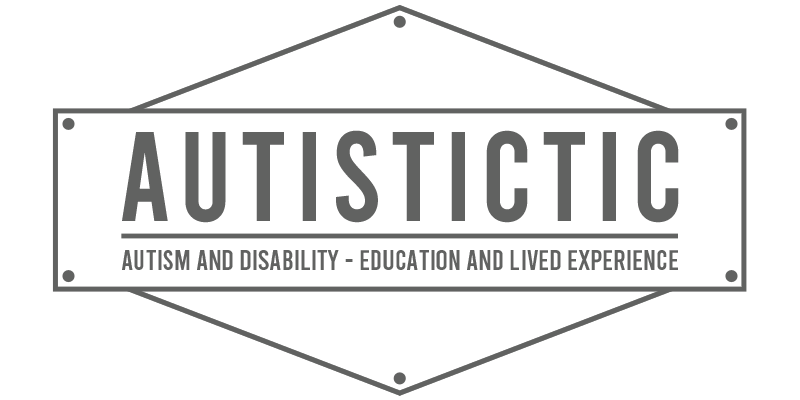HOME » BLOG » SELECTIVE MUTISM- THE FREEZING FEAR THAT STEALS VOICES

SELECTIVE MUTISM- THE FREEZING FEAR THAT STEALS VOICES

WHAT SELECTIVE MUTISM IS
Selective Mutism is a severe anxiety disorder. It is characterized by a person’s inability to speak in certain settings and/or with certain people, because of severe anxiety – while the same person is able to speak when they are comfortable, relaxed, and secure.
Selective Mutism is part of the non-speaking spectrum and is a disability.
Selective Mutism is not being intermittently non-speaking/non-verbal for reasons other than severe anxiety. There are many other possible reasons why someone may be non-speaking/non-verbal. I frequently witness people calling non-speaking/non-verbal experiences “Selective Mutism” that are not actually Selective Mutism.
Especially in the autism community, becoming intermittently non-speaking/non-verbal due to overload commonly gets mislabeled “Selective Mutism”. Please do not misuse this term, which describes a very specific condition, for other experiences. Just because something has the shared trait “non-verbal/non-speaking”, doesn’t make it Selective Mutism.
While many still consider Selective Mutism a childhood disorder, adults with it exist. It can be treated and recovery is possible. However, not all people with the condition get diagnosed and/or treated, and not everyone recovers in part or completely. Thus, this disability can be temporary or permanent.
The word ‘Selective’ is often misunderstood to mean affected people can choose when to speak. This is false and a very harmful misinterpretation. ‘Selective’ refers to ‘selective settings’ in which a person involuntarily loses their ability to speak due to severe anxiety. There is no choice involved.
This is why I (and many other SMers) prefer calling it Situational Mutism or Intermittent Mutism, and also advocate for changing the official diagnostic label accordingly.
INTERNAL AND EXTERNAL PRESENTATION
The visible symptom of Selective Mutism is becoming non-speaking. People with the condition struggle with speaking in front of others. This can include things like social interactions, phone calls, group work in class, group projects at work, giving speeches or presentations, reading out loud, and asking for help or directions.
Where, with whom, when, how often, and how long one becomes non-speaking varies greatly among individuals with the condition. Anything that triggers anxiety can trigger an acute episode (= becoming non-speaking).
The inability to speak is just one part of Selective Mutism. Other symptoms and traits include:
– physical symptoms of anxiety (e.g. stomach pain, nausea, headaches, racing heart, sweating)
– problems with communication and social interaction
– being unable to move, “freezing”
– a blank, frozen facial expression when triggered
– excessive shyness
– excessive negativity
– social isolation
– anxious behavior that gets misinterpreted as opposition/non-compliance/aggression
– anxious behavior that gets misinterpreted as shyness/embarrassment
People with the condition very commonly also have, or later develop, other anxiety disorders like Generalized Anxiety Disorder, social anxiety, school anxiety, separation anxiety, phobias, and Obsessive-Compulsive-Disorder.
Please note that Selective Mutism can go undiagnosed when people misinterpret it as being extremely shy and introverted, or oppositional and non-compliant. Luckily awareness is better today than during my childhood, so children with the condition get recognized better than they used to.
TREATMENT
TREATMENT GOALS
Becoming non-speaking is one symptom of Selective Mutism, not the cause. The cause is anxiety. The treatment goal thus shouldn’t be to get the person with Selective Mutism to speak. The goal should be that they experience less anxiety.
The issue here is, that for other people the anxiety is usually invisible – while becoming non-speaking is the visible part. People may conclude that being non-speaking is the problem, not anxiety. Treatments for Selective Mutism may consequently falsely target a person’s speech instead of their anxiety, which can be unhelpful, harmful, and doesn’t address the actual problem.
Selective Mutism typically doesn’t go away on its own. Additionally, the nature of anxiety is to worsen if unaddressed. This means that if the underlying anxiety goes unaddressed, it often worsens, persists into adulthood, and/or develops into other anxiety disorders.
TREATMENT APPROACHES
Whether or not a treatment approach is appropriate always depends on the individual person affected. Professionals most commonly use behavior strategies and Cognitive Behavior Therapy (CBT). Medication can help with severe anxiety. If a person with Selective Mutism also has a speech impairment, therapies may help for that as well (e.g. speech therapy).
I want to stress here, that it is important that professionals who treat people with Selective Mutism have experience with this condition. That they know what it is and isn’t, which approaches can be helpful and which can be harmful. And that they listen to us.
While behavioral approaches that try to coax speaking, that reward and reinforce speech are very common, many people with Selective Mutism do not consider these approaches best practice. Not everyone with the condition wants treatment either. Some have had treatment before and don’t want any more. Some want to just be accepted and accommodated. Listen to the people affected.
ACCOMMODATING SELECTIVE MUTISM
While one can work on the underlying anxiety that causes Selective Mutism, treatment should never be the only response.
A very important, and sadly still often overlooked, part of supporting people with Selective Mutism are accommodations. Whether the condition is temporary or permanent, accommodations equal better quality of life.
ACCOMMODATION EXAMPLES:
1. Education about Selective Mutism (family, friends, school, work, professionals, general public)
2. Acceptance of non-speaking people.
3. No pressure to speak.
4. Alternative communication methods.
5. Alternatives to typical oral participation at school, work, events, etc.
6. Alternatives to phone calls (e.g. Email).
7. Give people ample time to respond.
8. Predictability can help ease anxiety (e.g. visit your new school before school officially starts).
9. Official supports, support staff, special school services, etc.
10. For some people, starting over with new settings/people can help. (For others, this is harmful.)
PERSONAL EXPERIENCE WITH SELECTIVE MUTISM
I have Selective Mutism. I can’t remember ever not being selectively mute. My biggest issue, as is common, was school. Though other environments and interactions with people outside my home and immediate family were also very difficult for me.
People commonly misinterpret my mutism as being shy or oppositional. I was neither diagnosed nor treated or supported for it while growing up. This led to the condition persisting into adulthood. It also led to my underlying anxiety going untreated, worsening, and developing into a severe Generalized Anxiety Disorder.
For me, Selective Mutism doesn’t just affect my oral speech. It also affects typing, speaking with my AAC device, writing things down, and often even non-verbal communication like nodding or shaking my head. Most of the time, it’s best to minimize having to communicate at all, until the wave of anxiety flattens out enough.
For me, acute Selective Mutism is a distinct feeling of suddenly being completely frozen. I know what I want to say but just can’t make the words come out and often cannot move either. The overwhelming anxiety is the dominant experience. I am also very aware of other people’s reactions. Especially, when they try to get me to speak, mock or tease me, question why I’m not speaking, etc.
How distressing my mutism is for me depends largely on the situation in which it happens, where, and with whom. A common trigger is dealing with professionals, and having to self-advocate. If I can then not speak, or otherwise communicate, it can be very distressing. It takes away my autonomy and agency, leaving me at the mercy of other people. It also frequently leads to problems like inadequate healthcare, lack of support, my needs not being met, and more.
Here are some other people with Selective Mutism sharing their lived experiences:

Hallo,
Ich bin durch Twitter zufällig auf dich und dein Blog gestoßen und ich habe sehr viele Fragen im Kopf.
Ich bin Lehrer und arbeite regelmäßig und gerne mit allen möglichen Kindern und Jugendlichen. Mich beschäftigt der Bereich Autismus sehr und ich glaube, viele Sachen gut zu hinterfragen – und auch mit den Betroffenen selbst zu besprechen. Natürlich möchte ich immer noch bessere Arbeit machen und Rücksicht nehmen. Das Thema AAC ist für mich neu, ich habe auch einen Tweet vom 8. Oktober gesehen, in dem du Bilder aus deiner App veröffentlicht hast – oder habe ich das falsch interpretiert? Jedenfalls waren viele der genutzten Symbole in der App ziemlich toll und ich frage mich, ob du die selbst erstellt oder wo du diese gefunden hast.
Beste Grüße und Danke für dein Blog und deine tweets. Ich habe jetzt schon wieder vieles gelernt.
Huhu! Herzlichen Dank erstmal.
Die Symbole, die ich in meiner App nutze sind von METACOM. Sie wurden von einer Mutter entworfen, deren Kind mit den bis dahin erhaeltlichen Symbolen nicht zurecht kam, weil diese alle nicht minimalistisch und klar genug waren. Aus genau dem Grund nutze ich sie auch und bin nach wie vor sehr zufrieden damit.
Freut mich, dass ich weiter helfen kann!